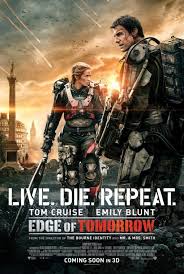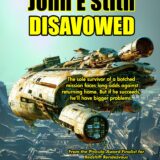It’s called a “time loop.” We’ve seen Bill Murray stumble through one as he relives the same day over and over again in the film Groundhogs Day. But that is exactly what is wrong with Groundhogs Day. Aside from the romance angle, the main character just stumbles along trying to take advantage of situations within his little recurring envelope of time. And in the end, what was the point of it all?
What would YOU do if you became stuck in a time loop? Just roll with it like Murray’s character? Or would you fight it?

Fight it. That is what the defiant character Keiji Kiriya does in the novel All You Need is Kill by Hiroshi Sakurazaka. As a raw recruit in the United Defense Force fighting alien invaders (Mimics), Kiriya finds himself stuck in a time loop. Continually waking to find himself in his bunk alongside his fellow soldiers awaiting deployment, he inevitably ends up on the front lines of the beach where he dies, again and again.
This book is a fascinating look at second chances. As an unskilled gamer used to relying on multiple lives necessary to get through each level of a video game, the recurring sequence of events in this story reminded me of the same type of second chances. And just like my gaming skills, practice makes perfect. With each new life, I advance (well, most of the time anyway) a little further until eventually I make it through to the next level, all in thanks to second (and third, and fourth, and…) chances. But in real life war scenarios, death means death. There are no second chances.
All You Need is Kill is obviously not a literary video game, but it does bring some appreciation toward the skills one hones when performing over and over. It doesn’t take long for our hero Kiriya to realize this opportunity. As a young raw recruit, he is merely a pawn on the battlefield. But as an experienced soldier who has fought countless battles (granted, it is the same battle) over and over, he soon becomes a skilled killing machine.
From a literary perspective, the story is a cultural examination of social perceptions. Author Hiroshi Sakurazaka gives the main character Kiriya a unique awareness of the differing cultural identities that make up the members of United Defense Force. Yet, the soldier’s appreciation of the cohesive venture against a common foe allows the reader to focus more on the mysterious time loop than on an otherwise distracting element of various nationalities.
The supporting character of Rita Vrataski is a bit confusing at times. She is a highly decorated American soldier who plays a large role in the time loop premise, but we get mixed signals on her relationship with Kiriya throughout the story. Known widely as the Valkyrie (chooser of the slain) because of her merciless battle skills, her harsh persona also earned her the nickname of Full Metal Bitch. Her part is magnified even more when an entire chapter is provided for her through third person narration, but the reader still gets the sense she may be unreliable as we discover her vulnerable side.
She did however have one interesting thought that I found to be quite amusing if not distracting.
“What if someone who had the potential to discover a formula to unlock the mysteries of the universe wanted to be a pulp fiction writer?”
This passage was in regards to choices and decisions, but it was so impactful I had to sit the book down and think about other implications it involved. This notion was simultaneously frightening and humorous. Even though this passage detoured from the overall plot, the literary fan in me was grateful that it was included.

Sure the traditional Japanese influence that drives Kiriya is evident throughout the pages, but I can’t help and take a cautious step back, wondering if any emotional integrity of Sakurazaka was lost in the English translation. And now that All You Need is Kill has been made into a major film titled Edge of Tomorrow starring Tom Cruise and Emily Blunt (to be released in the U.S. by Warner Bros. Pictures this Friday, June 6, 2014), the rendition is sure to be twisted from the base story even further. Just consider that the main character will be played by Cruise and you might understand my hesitation.
The translation reviewed here was by Alexander D. Smith. Whether or not the full emotion of the story was maintained when converted over to this English installment, I will never know. But from a simple fan’s perspective, All You Need is Kill by Hiroshi Sakurazaka was both entertaining and thought provoking. As always, I’m confident the book is better!
(Editor’s Note: All You Need Is Kill was the first novel in a series of Japanese translations edited by Nick Mamatas and published by Haikasoru; when it was time for a graphic novel, Haikasoru decided to go with their own based on the book. You can read Nick Mamatas’ write up about it here and order a copy here.)










